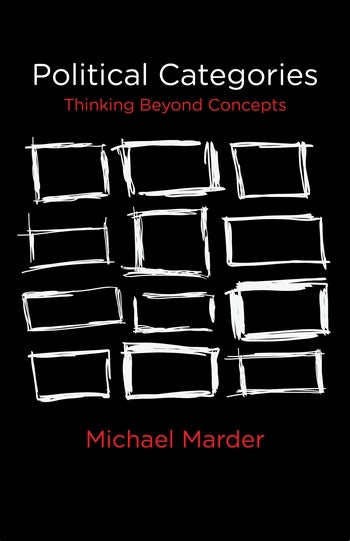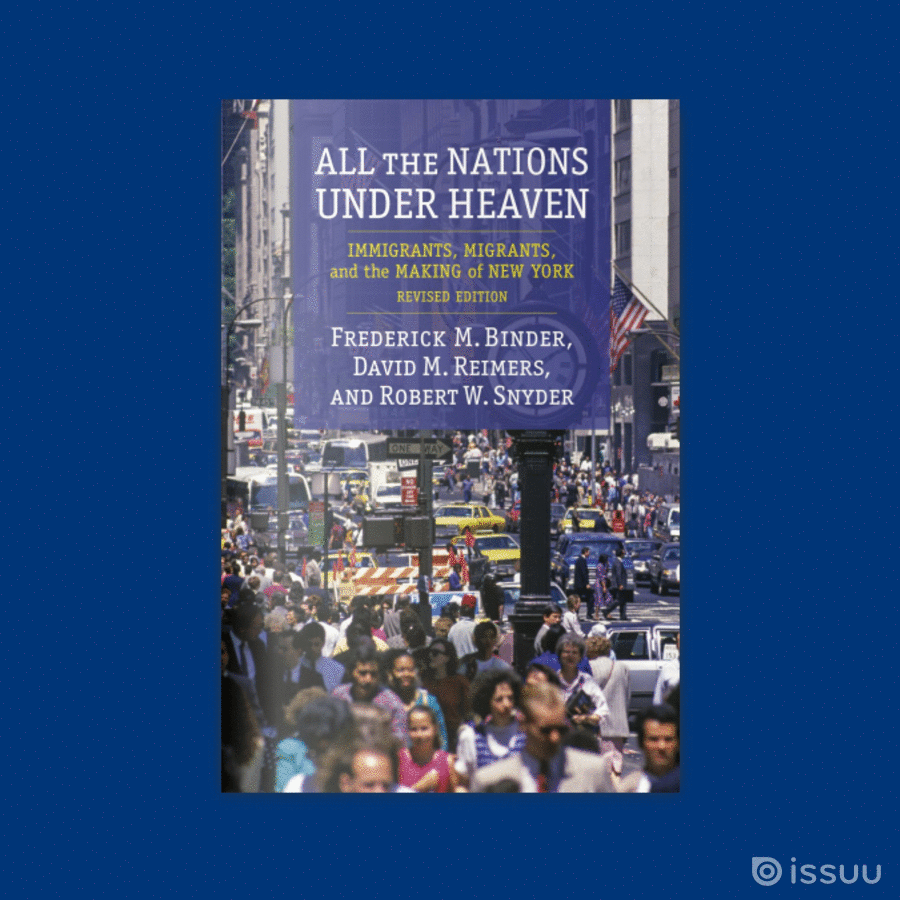Immigration, Racism, and the Growth of Economic Inequality in New York City

“Updated throughout and extended to the present through the latest scholarship, this enduring classic demonstrates once again how central the growth of immigrant-origin communities has been to the neighborhoods, collective life, politics, and economy of New York City. All the NationsUnder Heaven brings to life the great and ongoing saga of immigrants helping a great city to reinvent itself.”
~ John Mollenkopf, coeditor of Unsettled Americans: Metropolitan Context and Civic Leadership for Immigrant Integration
This week, our featured titles is All the Nations Under Heaven: Immigrants, Migrants, and the Making of New York (revised edition), by Frederick Binder, David M. Reimers, and Robert W. Snyder. In today’s guest post Snyder and Reimers discuss the three trends in the revised edition, which revolve around immigration, racism, and economic inequality in New York City. The revised edition is now available. Enter our drawing for you chance to win a copy of the book!
• • • • • •
We live in a world where international movements of goods and capital have produced a global recession and recovery, along with wrenching economic inequalities, and contributed to surges in immigration that have sparked hyperpluralism and nativism. All of these have remade New York City.
To fully address all these changes—which demands both a close examination of recent history and a new look at the deep past—we thought it was time to revisit and revise All the Nations Under Heaven: Immigrants, Migrants, and the Making of New York. Three major trends define the new version of the book: the contrast between the city’s relative acceptance of immigrants and an enduring strain of racism against African Americans; the continuing cultural and political impact of immigration and migration in an increasingly plural city; and the growth of economic inequality in a global capitalist city.
In the middle of the 1980s, when Dave Reimers first thought about writing All the Nations Under Heaven, a new surge in immigration was evident in New York but it wasn’t clear where it would take the city. In 2019, however, the impact of globalization has come into sharper focus.
New York remains culturally fertile. For example, rap music that drew on African American and West Indian traditions that emerged in the Bronx and Brooklyn in the 1970s is now, thanks to New York’s position as an international center of communications, part of global culture. But the economics and political culture of the city have evolved in ways that make it more difficult to establish the kind of broad prosperity that lifted up European immigrants and their children, and made New York—with all its racism and inequalities—a beacon for African American and Puerto Rican migrants in the middle of the twentieth century.
“The immigration that produced the present city, however, is far more diverse than the one inhabited by Tammany Hall chieftains.”
The latest surge in immigration, defined by peoples from Asia, the Caribbean and Latin America, challenges some of the received wisdom about New York City politics. The Irish immigrants and their descendants who thrived in Tammany Hall may have written the book on how to amass urban political power—with their emphasis on controlling turf, pragmatically accepting cultural differences, and treating politics like a profession. But the lessons of the Irish political experience have limits. The Celtic leaders of Tammany Hall thrived in a city where immigrants tended to arrive in defining pairs of groups, like the Irish and Germans in the middle of the nineteenth century and the Jews and Italians in the early twentieth century.
The immigration that produced the present city, however, is far more diverse than the one inhabited by Tammany Hall chieftains. No two groups dominate as they did in the past. New York’s top six immigrant groups in 2011 were, in descending order, from the Dominican Republic, China, Mexico, Jamaica, Guyana, and Ecuador. In Jackson Heights, Queens, by one count, residents speak 167 languages. Coalition building is harder, and underdogs find it more difficult to fight their way into power.
And the benefits of winning city hall are not what they used to be. Fiorello LaGuardia, who steered the city through the Great Depression and World War II and brought a generation of Italians and Jews into political recognition, benefitted enormously from Federal spending to ease the Depression and fight the war effort. Since the 1970s, however, Federal spending on cities has declined.
“New York City mayors face the crosscurrents of a global economy without the supports their predecessors enjoyed.”
Mayors today may be institutionally strong within city government, but thanks to state laws their powers largely vanish at the city line. New York City mayors face the crosscurrents of a global economy without the supports their predecessors enjoyed. Two of the most pressing issues in the city today are low wages and affordable housing, both of which cast shadows over immigrants’ abilities to find prosperity in the city. But neither problem is easily susceptible to mayoral influence.
The limits on the city’s political power stand in sharp contrast to its economic strength, a strength that is inextricably bound up with immigration. Immigrants are more than one third of the city’s population, 44 percent of its workforce, and almost half of its small business owners. New York, as demographers have noted, is “A City Dependent on Immigration.”
Yet the fruits of this prosperity are not evenly distributed. New York has long been a city of economic inequalities, but in recent years neighborhoods that were once equated with urban poverty—the Lower East Side, Harlem, Bushwick—have seen gentrification and new construction that have raised rents and brought in new residents, without alleviating the plight of the poor. In general the children of recent immigrants are doing better than their parents, but rates of poverty for native-born African Americans and Puerto Ricans remain stubbornly high.
“In general the children of recent immigrants are doing better than their parents, but rates of poverty for native-born African Americans and Puerto Ricans remain stubbornly high.”
New York remains a city where native-born whites and many immigrants have found an acceptance and success that would have eluded them elsewhere. Indeed, New York politicians of all stripes praise immigrant contributions to the city and reject the nativism that scars other parts of the United States. But for people of color, especially those of African descent, prosperity in the city can be precarious and elusive. If New York’s ability to absorb generations of immigrants reflects the best in the United States, the endurance of racism in the city reflects its inability to overcome America’s national sin.
Today, as in earlier times when immigrants came to the United States in significant numbers, immigration is a pressing national issue and nativism is a potent political force. Ironically the White House is occupied by a New Yorker who rages against immigrants, a man so unpopular in his home city that as a presidential candidate in 2016 he received only 18 percent of all votes cast in New York City.
New York, for all the tumult that immigration has brought to its streets, is a place where immigrants are still seen as a source of strength, energy and enterprise. In an age of loud nativist voices, that record alone makes it worthwhile to take a second look at the history of the city’s migrants and immigrants.
As we conclude in our book:
New York, thanks to its dynamic economy and polyglot peoples, is forever a work in progress. It nourished hopes and shatters them, fulfills and frustrates idealism, and then—just once in while—proves that it is possible to be tough without being mean and generous without being a sucker. Above all, despite its frictions and inequalities, it rebukes nativists and proves that it is indeed possible for all the nations under heaven to live together in one great city.




